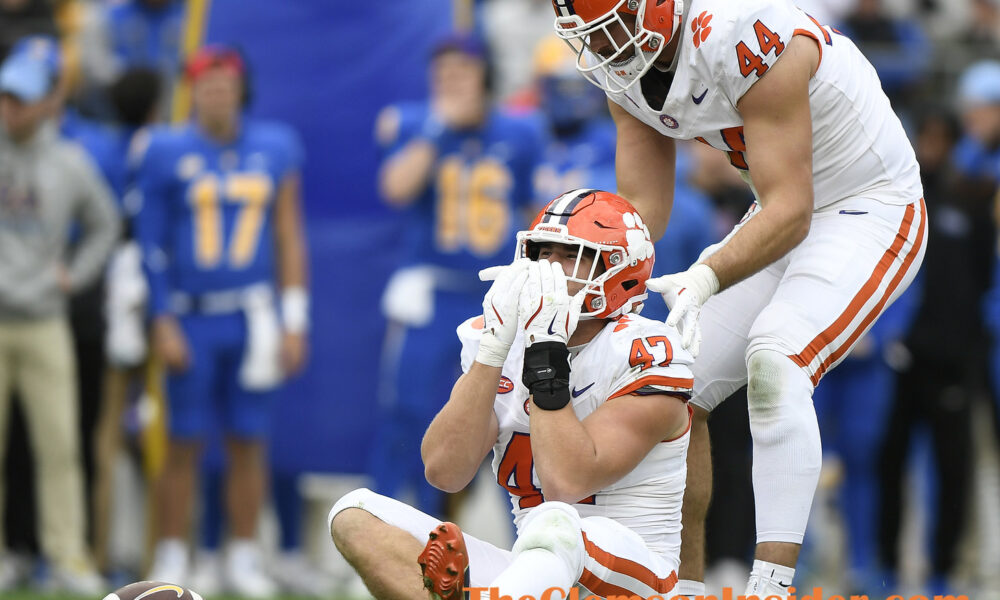Dabo Swinney does not know what targeting is anymore. Neither do I. Neither does anybody else.
The NCAA’s targeting rule in college football aims to prevent dangerous hits to the head or neck that can cause serious injuries. We get that and it is a great concept in theory.
Unfortunately, each week, there seems to be a targeting call that clearly did not look like targeting but is upheld or one is not called that looks like targeting or one is called and looks like the very definition of targeting but is overturned by replay or by some mysterious person at the ACC’s official headquarters in Charlotte.
“I do not know what it is, I do not know what targeting is,” Swinney reiterated Tuesday during his weekly press conference.
What is the definition of targeting?
According to the NCAA, targeting is when a player makes forcible contact with an opponent that goes beyond a legal tackle or block, or when a player initiates contact with a defenseless opponent above the shoulders.
Targeting includes, leading with the crown of the helmet, forcibly hitting a defenseless player in the head or neck with the helmet, forearm, hand, fist, elbow, or shoulder or launching into an opponent with a hit to the head or neck.
The rule places a special emphasis on defenseless players, such as a receiver catching a pass or a quarterback after a throw.
“Again, I go back. Just look at the Cal and Miami game. If that is not targeting, I don’t know what targeting is,” Swinney said.
Swinney’s comments come after Clemson linebacker Sammy Brown was ejected for targeting, which replayed upheld in the Tigers’ win at Pittsburgh last Saturday. The Clemson head coach still does not believe Brown’s hit was targeting after reviewing the game film.
“I see a lot of time, I am like, ‘No way that is targeting,’ and they call targeting,” he said. “Then I see, ‘That is definitely targeting,’ and they do not call targeting. So, I don’t know. Nothing has changed.”
The unfortunate thing about targeting is the punishment that comes with it. It does not fit the crime.
A player is tossed out of the game and if it happens in the second half, he has to sit out the first half of the next game as well.
The penalty does not fit the violation in most cases. The NCAA needs to adjust this rule and enforce it like the NFL does. Charge the player with a personal foul and mark off the 15-yard penalty. That is fine. However, stop tossing these kids from the game.
They are not trying to hurt anyone. Ninety-Nine percent of the violations do not have intent behind them. They are football plays. If a player is called twice for targeting, then yes, toss them from the game. But in most cases, no one is trying to hurt anybody.
College football is just a 12-game season. Forcing a player to potentially miss an entire game in such a short season is not a fair and just rule.
The result is even worse when no one really knows what targeting is anymore.
“Again, I am going to have to go to a seminar in the off-season because it is different,” Swinney said. “Week to week, league to league, ref to ref, it’s different. Surely y’all can agree with that, it is just different.
“I am not talking about a specific play. I am talking about in general, I do not know what it is.”
Neither does anyone else, Dabo. Neither does anyone else.
